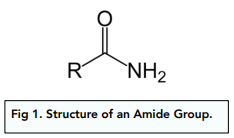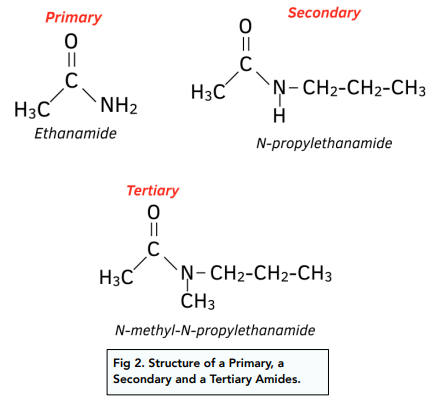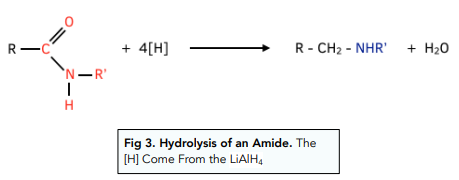Carboxylic Acids and Derivatives - Structure of Amides (A-Level Chemistry)
Structure of Amides
Amides
The functional group for an amide is R-CONH₂.
The structure of an amide is:

The C atom of the acyl group is attached to an amino group.
Amides can be classified as primary, secondayr or tertiary:
- Primary amides – In primary amides, there is just an -NH₂ group attached to the C atom.
- Secondary amides – In secondary amides, one of the hydrogen atoms on the N atom is replaced with an alkyl group
- Tertiary amides – In tertiary amides, both H atoms are replaced with alkyl groups
Naming Amides
- Amides are named with the alkyl prefix. This is the name of the carbon chain the amide group is attached to and will be followed by the amide suffix.
- The presence of either single or double C-C bonds changes the prefix. If there are single bonds between C atoms, the prefix is followed by -an and the suffix -amide. If there are double bonds between C atoms in the alkyl chain, the prefix is followed by -en and the suffix -amide.
- To name substituted amides, the prefix N- is used to name the alkyl groups attached to the N atom. If alkyl groups on the N atom are different, they are named in alphabetical order.
Some examples are given here:

Reactions of Amides
Hydrolysis
In the hydrolysis of amides, the C-N bond in the amide group is broken to produce an amine (or ammonia in the case of unsubstituted amides).
Hydrolysis of amides is brought about by refluxing a solution of the amide amide with either an acid such as hydrochloric acid or an alkali such as sodium hydroxide.
- Acidic hydrolysis – The products of the hydrolysis of an amide with an acid are a carboxylic acid and an amine (or ammonia for unsubstituted amides), which react with excess H⁺ to form an ammonium salt.
- Alkaline hydrolysis – The products of the hydrolysis of an amide with an alkali are a carboxylate salt and an amine (or ammonia for unsubstituted amides)
Reduction
Amides can be reduced by of lithium tetrahydroaluminate (LiAlH₄) to form an amine and water.

Amides as Bases
Amines act as bases by donating the lone pair of electrons on their N atom to H⁺ ions in solution.
Amides can also act as bases in the same way. However, the presence of a partial positive charge on the C atom of the acyl group will attract the lone pair of electrons on the N atom of the amide group towards itself, so that it becomes less readily donated to H⁺. As a result amides are much weaker bases than amines.






Still got a question? Leave a comment
Leave a comment